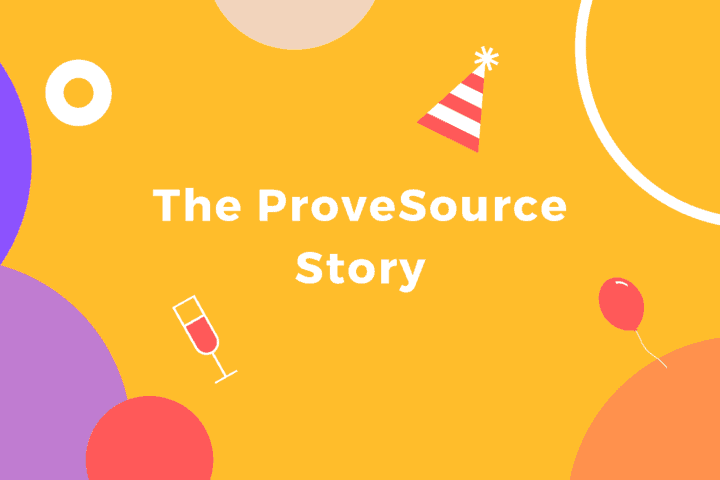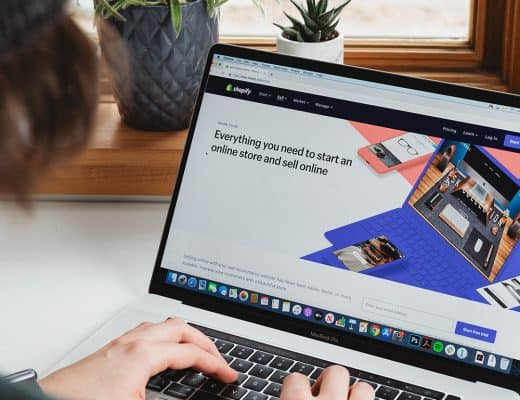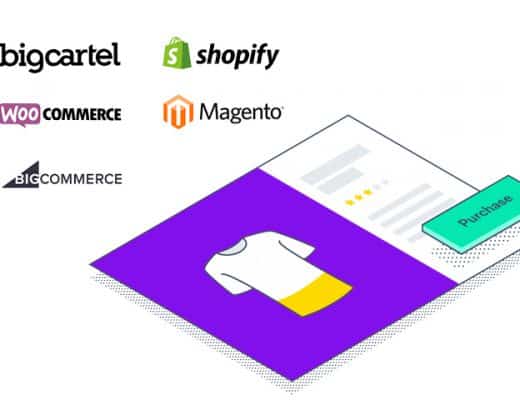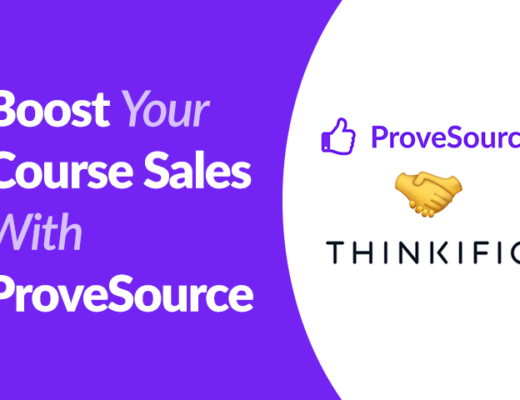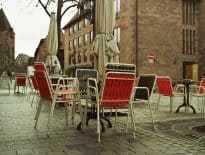TLDR: Stories and takeaways from growing ProveSource from 0 to $700k ARR as a 2-person team in less than 3 years and with no funding.
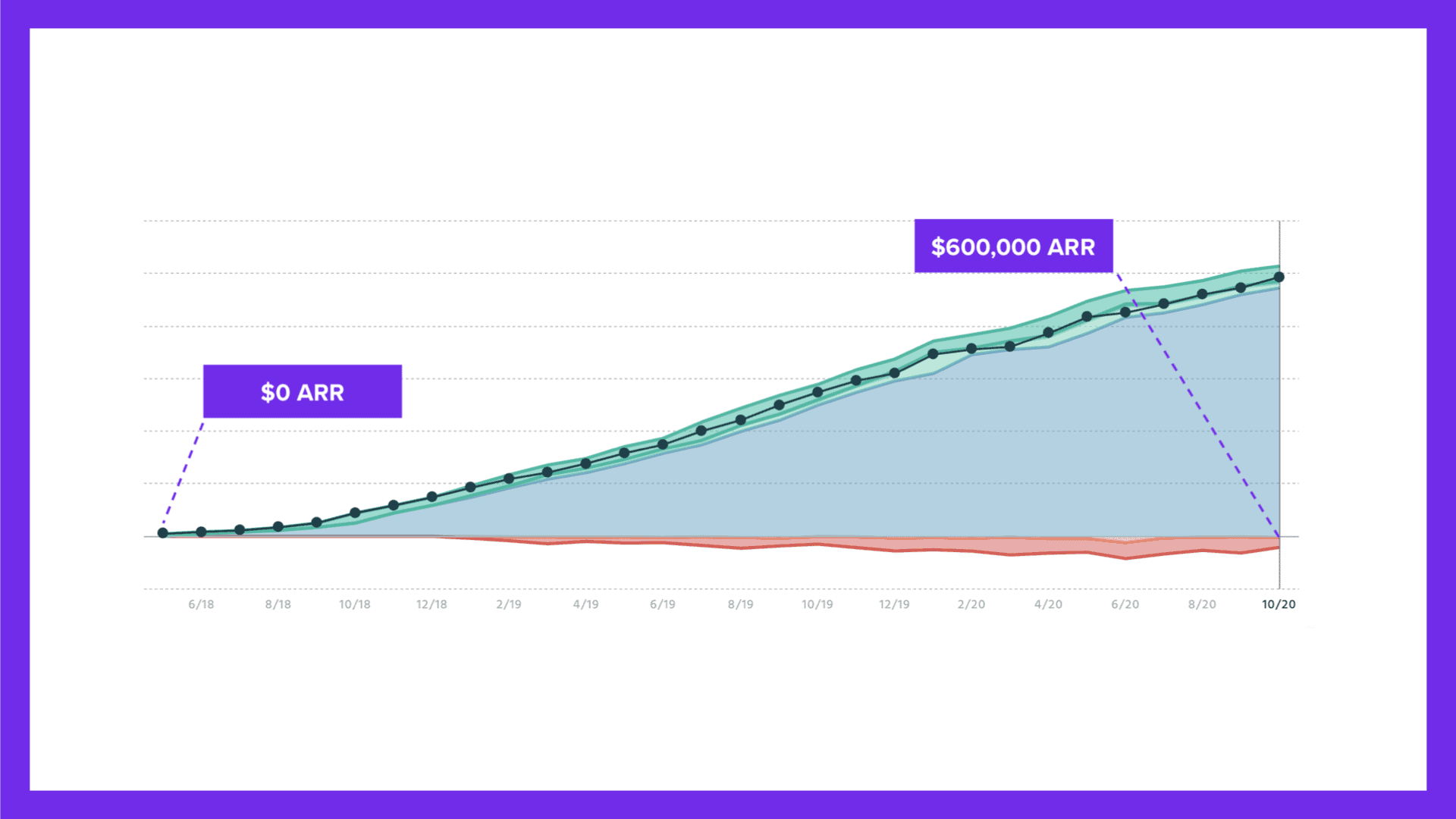

Our false start
We started the company in June 2015 with no real idea.
Most people we know fail to ever get started because they’re looking for the perfect idea.
As the founder of Instagram famously said:
“It’s about going through false starts. The best companies in the world have all had predecessors. YouTube was a dating site. You always have to evolve into something else.”
We brainstormed for several days and because both myself and Natan (my co-founder) are very good with mobile app development (iOS & Android) we decided to build a personalization platform for mobile apps and sell it to enterprises.
Around 2.5 years later, having invested almost $100k out of our own pockets, having done hundreds of calls and demos with huge enterprises and dozens of Proof of Concepts, we decided it’s time to move on…
It felt awful – like you’re killing something you love, but it had to be done.
That was our “false start”. But more on that another time.
🧠 Lesson learned:
The sooner you kill an idea that is getting no traction, even if it’s super hard because it’s your baby, the less painful it is. The more time and resources you devote, the harder it becomes to pull out in case things don’t work out.
Starting over – The lean way
In January 2018 we decided to start working on a new SaaS product.
The idea was to “steal” the social proof hack that Booking.com was using (e.g. 5 people booked this hotel, etc.) and create a platform from it – a social proof marketing platform.
This time, because we were running on fumes, both in terms of cash and motivation, we decided to validate the idea first.
We had a single purpose in mind – getting 100 leads interested in our product.
We created a landing page that showcased our new idea as a real product, including pricing, a signup button, and all – a social proof marketing platform for mobile apps.
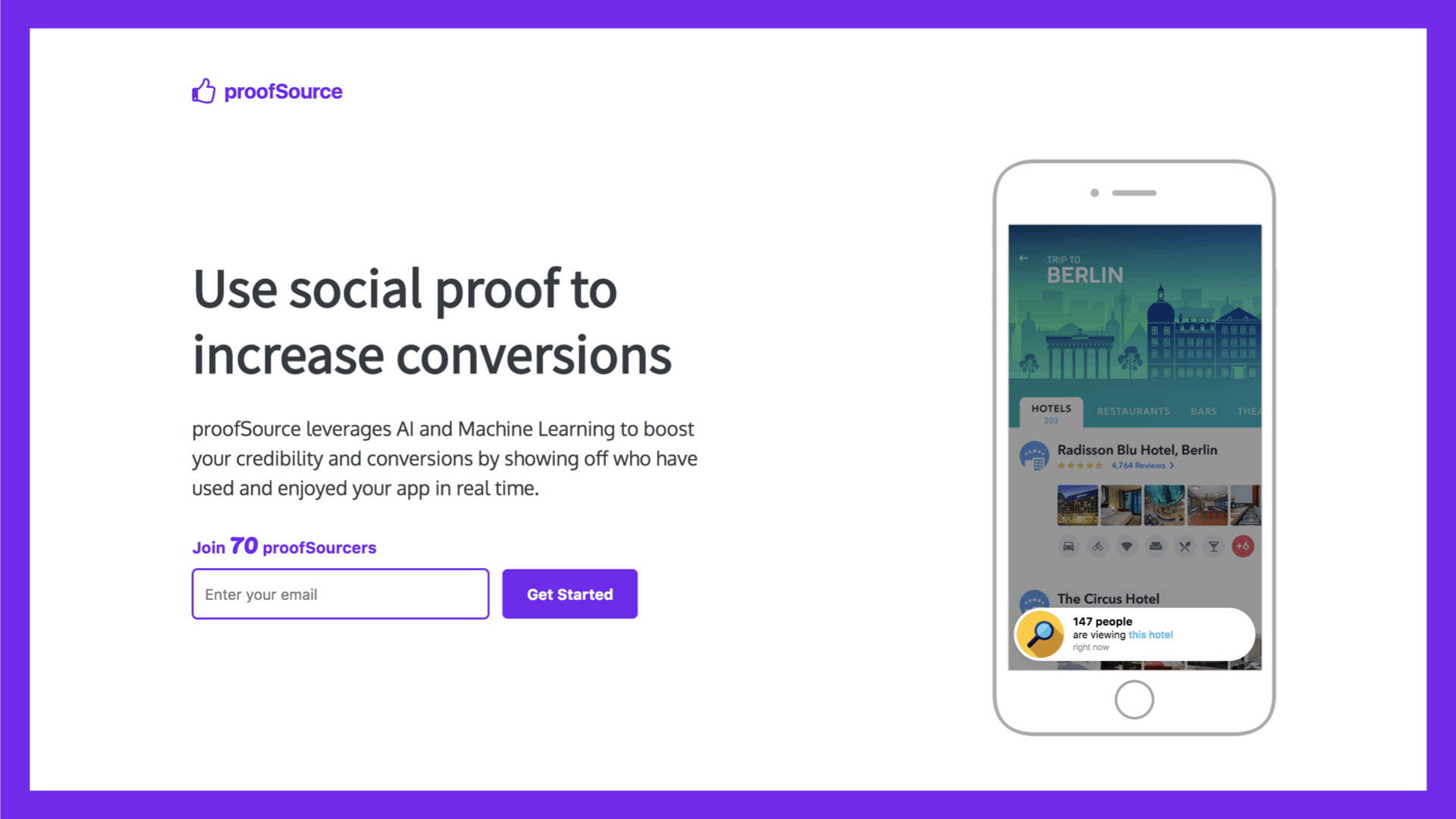

The fastest way to get targeted traffic to your website is to use Google Ads targeting the brand names of the biggest players in your niche.
So we did that.
We also posted the landing page anywhere we could think of: Reddit, ProductHunt, BetaList, social media, wherever…
About one month and – $300 later, we had around 200 leads that wanted to try out ProveSource.
We were finally making progress!
We figured that even if only 1% of them converted, we would already have 2 paying customers.
🧠 Lesson learned:
You can easily get traction without having a product.
Just buy a domain, build a landing page, and go validate your business idea.
We usually create landing pages to validate products using plain HTML and Airtable, to send the leads we collect from the forms. No fancy designs, no expensive CRM.
Making our first dollar $
Next goal – how do we make a dollar?
That is, unlike our previous product which made practically $0 in 2.5 years.
We created a rule that whenever we launch a new product, all our efforts will be towards making our first dollar, so we can have real-life validation.
So we have 200 people interested in ProveSource.
Now we needed to give them a product and get them to pay.
We built the leanest MVP possible:
- A product just for website owners (mobile was too small of a niche).
- You could only show how many page visitors you had on your website.
- The whole UI and UX should be super simple. No menus and extra buttons, don’t give users a reason to abandon your product.
Did you forget your password and need to reset it? Sorry, no can do.
Did we accidentally change your password when you logged in? Oops, we’re on it.
What are onboarding and email automation? Dunno, don’t care.
April 2018 – we are approached by a Facebook Group admin that is interested in promoting our product to his group as a “lifetime deal” (LTD).
This means selling a lifetime subscription to your product for a one-off payment ranging from $39-$99.
We’ve never heard of this before so we thought long and hard about the consequences of selling a lifetime deal and how it would position the product and our company…
We decided to go with the deal and ran it with the group for 1 week.
We generated over $7k revenue, got tons of feedback, ideas for product improvements, tons of bugs were discovered in the process, which taught us the value of having live chat support.
🧠 Lesson learned:
In hindsight, there were no real consequences, only advantages to running a lifetime deal.
Sure, you have a few dozens of customers that are not paying you on a recurring basis – but they help a lot in the beginning when you need the cash and the validation.
Once we were done with the LTD we started pushing the product in all marketing channels and to our 200 user waiting list. None of them converted by the way.
A couple of days later we got our first monthly subscription customer ($19/month).
It was an amazing moment, validating that you indeed have a real business opportunity in your hands.
Our “wow moment”
During the next months, we focused on spreading the word, squashing bugs, and doing tons of support for our existing customers.
How did we decide what to build next?
- We learned to ask questions about our product’s value. Why do people buy our product? Is it because they want to increase conversions? How do we help them achieve that?
- We brainstormed about what it means to be a social proof platform.
- We heard our customers’ feedback
- We learned from competitors; but not too much. We found that those who only copy will always lag behind.
This whole process has to be accompanied by analytics and metrics.
You don’t have to measure each and every step or A/B test you do, though.
We don’t really do it, to this day.
A lot of product leaders talk about the “wow effect” or “wow moment” – if you want to retain users, make them say “wow”.
For Facebook, for example, their “wow moment” is logging into their platform and seeing familiar faces. That’s why they make sure that during sign up, you connect with as many people you know on Facebook as possible.
In our case, we focused on improving our user onboarding.
Since the product requires users to install a javascript snippet on their website, we put a big emphasis on making that process as easy as possible.
Our thought was – if users can see a social proof notification on their website, they’ll get to that “wow moment”.
We can see a very close correlation between successful onboarding and someone becoming a paying customer.
The funnel looks like this:
- 8-10% of visitors will signup.
- 70% of those signups will complete the onboarding.
- 7-10% of those users who are onboarded will eventually become paying customers.
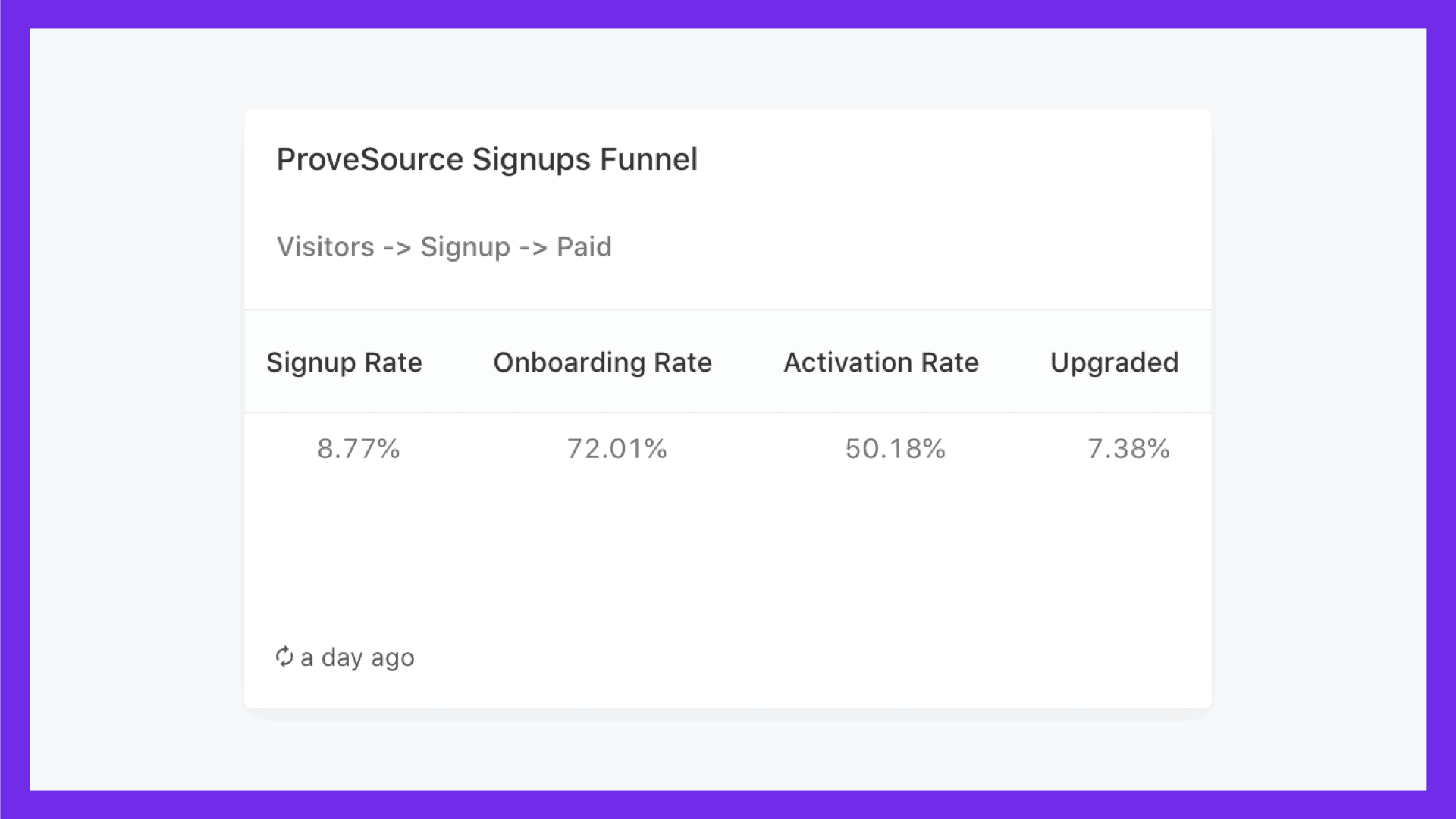

🧠 Lesson learned:
Find what your “wow moment” is in your users’ experience, and make sure you get users to experience it as early in the onboarding process as possible. That way you can spend a lot on User Acquisition activities because the users you bring in end up becoming paying customers and sticking with you.
Our First Growth “Hack”
After we added some “necessary” features like showing recent sales and polishing the product to have fewer bugs – we wanted to grow bigger, we wanted to scale up, we wanted to get more exposure.
How do you scale a notifications product that is essentially an add-on for websites?
You build integrations for all website builders.
So we worked hard on adding more and more integrations: WordPress plugin, Shopify app, Magento plugin, Wix app, Zapier, BigCommerce, and more.
All of these marketplaces and app stores proved to be really good traffic sources and traction channels for us, each with its own audience and unique requirements.
Today, around 20% of our customers and revenue comes from Shopify alone.
Scaling past 2 people
Being a two-person team that does development, marketing, support, accounting, and more is tough. But it also teaches you a lot, you learn so much about your business, your audience, and your customers.
And that gives you the experience you need on what to look for when hiring someone to take over some of your responsibilities.
In September 2019 we decided it’s time to scale the team.
After all, a great company can’t be just 2 people, right?
Naturally, a software company’s first hire would be a developer.
Bringing Dima to the team, allowed us to build more integrations faster, and scale the company beyond its initial stage.
So we now have tons of integrations, pretty much with any large marketing or website platform out there.
We also scaled and optimized our Google and Facebook ads as much as we could.
We optimized our product onboarding rate, increased prices, added great features, and made it even easier to use the product, by adding tooltips, auto-suggestions, wizards, and more.
We were growing at a steady rate, so what could possibly be bothering us?
Well, we didn’t know how to grow faster, or what to do next.
We came up with a few ideas:
- Bring a Growth team member to scale our marketing efforts and bring new ideas to the table.
- Since our product offering is strong and we couldn’t think about any impactful feature we could develop – we thought about zooming out of our product’s initial market.
- Build a new product – we have no investors so we are free to make any decision we want about the company’s direction. Investors often block the founders from doing whatever is best for the company and push for a point where they can exit.
Building a new product
At this point, we decided to build another product to scale the company further.
We had these questions in mind before picking what to work on:
- How big is the market, is it potentially bigger than our current product?
- Would our existing customers be customers of this new product too?
- What do our existing customers need and are willing to pay for?
Adding ProveSource to your website is great, but, there is a critical prerequisite to making it work for you and your website: traffic. If your website has no traffic, you won’t be able to generate social proof.
Here’s the “secret” recipe:
Traffic = Conversions + Sales = Revenue = Social Proof
That’s why we have decided to create PurpleAds – to help our customers and everyone else, drive more traffic to their website in a simple way.
How would we go about doing that?
Exactly like last time – sell it before you build it. Sometimes we feel like we’re dropshipping our ideas.
And PurpleAds was born!
The second baby in the Configo family (Configo is actually our company name).
Scaling past $500k ARR
As a developer-first team, we found it pretty straightforward scaling in the early stages, hitting our first significant revenue milestones (i.e. $500k ARR).
But the initial question remained.
How can we accelerate the growth of our product even further?
That’s when we had to make our first Growth Marketing hire.
So what came next?
Building Lead Magnets, creating a lot of new content, migrating our website to WordPress so we can continue building a lot more pages faster.
We knew that we wanted to bring more traffic to the website, as our existing funnel worked perfectly well, but driving traffic on its own is not enough.
You have to qualify and nurture the traffic you bring in, especially as your traffic numbers grow so that your conversion rate doesn’t deteriorate.
Luckily, we hired Bill, our VP of Growth to take care of that and take over some of our marketing responsibilities.
Having a Marketer on board, allowed us to focus on the more strategic side of the business a bit more, looking into the future and the bigger picture for our company and its products
🧠 Lessons learned:
Marketing and Growth are an endless game, especially when you’re trying to grow fast.
We’re continually trying out new experiments, from running memes as Facebook Ads, to building a Marketing Academy and hosting our first ever webinar.
Some of them work, and it’s great, some of them don’t, and we move on.
The important part is speed, being lean with your Marketing campaigns, and measurement, having just enough data to either persist or move on.
Next steps and challenges
Having steady support with Marketing and Development gave us time to discuss the next day for ProveSource.
And that includes one more product addition to the Configo family.
We can’t share much yet, but keep an eye out on Product Hunt, and you’ll definitely hear from us soon.
As for our current challenges, finding talented people to join your team can sometimes be a pain in the (well, you get it), especially if you’re doing it yourself.
But we’re glad that we are still a small and strong team, ready for whatever lies ahead, and eager to help even more businesses out there succeed with Social Proof.
Till next time! 😎

